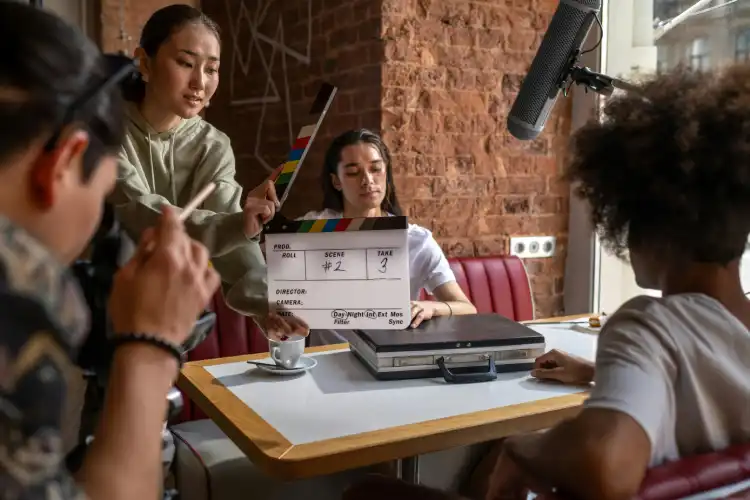Film production is both exciting and complex, requiring creativity, strategic planning, and precise execution. Whether you’re producing a short film, commercial, or feature-length movie, understanding each stage ensures smooth operations and a high-quality result. While many film production companies offer comprehensive services, knowing how each element fits together empowers you to make informed decisions at every step.
Gaining knowledge of the pre-, shooting, and post-production processes can help you work with your team more efficiently, control costs, and realize your creative vision.

Pre‑Production Planning Essentials
Pre-production forms the foundation of any successful film project, transforming ideas into structured plans.
You begin by developing your concept into a compelling narrative. Working with writers or script consultants helps shape a screenplay that suits both your creative vision and budget. Storyboards or shot lists then bring scenes to life visually.
Budgeting and scheduling follow. You must account for crew and talent fees, equipment costs, location fees, set design, props, and post-production expenses such as editing and visual effects. Once the budget is set, a realistic shooting schedule ensures efficient coordination of locations, talent, and weather contingencies.
Legal preparations are a must. You should finalize contracts for cast and crew, handle copyright clearances for media and scripts, and secure insurance for equipment, personnel, and liability.
Hiring Crew and Talent
A project’s quality rests on the expertise of its team.
Essential crew members include the director, producer, director of photography, production designer, sound engineer, and editor. Depending on your project’s scale, roles might also include assistant directors, costume designers, or VFX specialists.
Casting actors involves holding auditions or working with agencies. Screen tests help assess performance suitability. All engagements should be secured with contracts detailing usage rights and compensation.
Partnering with an experienced film production company can streamline hiring, drawing from their network of trusted professionals.
Equipment and Location Logistics
Choosing the right tools and settings elevates production quality.
Select your camera and lens setup based on resolution and cinematic style. Lighting and sound gear such as microphones and recorders ensure scene clarity. Grip and rigging tools facilitate camera movement and set stability. Renting equipment through a production company can be cost-efficient, especially for high-end tools.
Location scouting must balance aesthetic appeal with practical needs accessibility for gear and crew, permit feasibility, power supply, restroom access, and nearby accommodations. This ensures both creative vision and logistical viability.
Collaborate with your production designer to build or adapt sets and source props that align with your story’s era and tone.
Post‑Production Workflow and Delivery
Post-production is where your film transforms into its final polished form.
Start with editing, where the editor assembles footage to refine narrative flow, pacing, and visual coherence, working collaboratively with the director and producer through multiple feedback rounds.
During sound design, you mix dialogue, sound effects, and music. If necessary, ADR helps improve audio quality, and Foley art adds realism to the film’s soundscape.
Visual effects and color grading enhance the film’s visual aesthetics. These include CGI integration, visual tweaks, and adjusting color tone and contrast to unify the visual mood. Scoring your film involves collaborating with composers or licensing tracks that enhance emotional tone and narrative resonance.
Finally, prepare your final output according to distribution needs creating digital files for streaming, Digital Cinema Packages (DCP) for theaters, and promotional materials like trailers and posters. Film production companies often offer full-service support for these deliverables.
Final Thoughts
Film production weaves together creative vision and technical precision across its stages from pre-production planning and crew hiring to equipment logistics and post-production craftsmanship. Collaborating with experienced film production companies simplifies these processes, giving you access to industry-grade talent and tools. Whether you’re just starting or already producing, mastering these fundamentals will help you bring impactful, memorable films to life.
